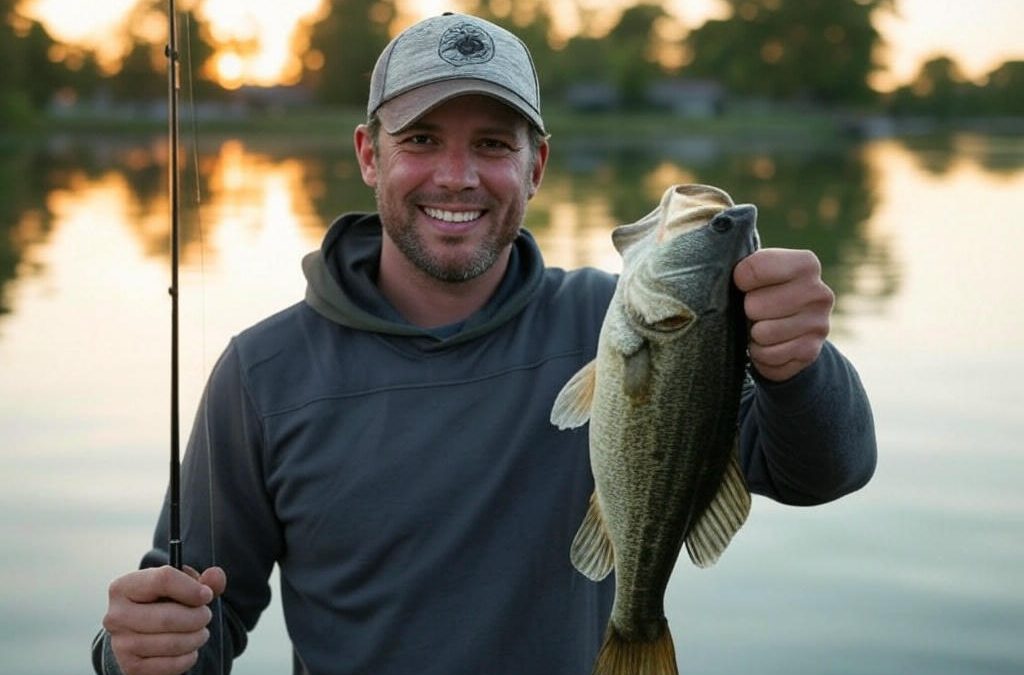When it comes to bass fishing, choosing the right bait can make the difference between a successful day on the water and a frustrating one. Bass are known for their aggressive feeding habits, and their preferences for food can vary greatly depending on various factors like weather, water conditions, and seasonal changes. As anglers, we are often faced with the dilemma of whether to use live bait or artificial lures. Each has its advantages and drawbacks, and understanding when and how to use them is crucial to boosting your chances of landing a big catch.
At Horizon Fishing, we pride ourselves on providing expert advice and personalized fishing experiences. In this article, we’ll dive deep into the debate of live vs. artificial bait, discuss their pros and cons, and help you understand which option is best suited for your bass fishing adventures.
Understanding Bass Behavior
Before we explore the bait options, it’s important to understand the behavior of bass. Bass are predatory fish that primarily feed on smaller fish, crustaceans, and various invertebrates. They can be found in both freshwater and saltwater environments, with largemouth bass being the most popular target for anglers in freshwater fishing.
Bass hunting patterns are influenced by many factors including water temperature, clarity, and structure. They can be particularly selective when it comes to food. That’s why choosing the right bait – whether live or artificial – can be a game-changer.
For bass fishing enthusiasts, Horizon Fishing provides expert-guided fishing trips to help you understand the best techniques for targeting these elusive fish. You can learn more about our bass fishing techniques here.
Live Bait: A Natural Approach
What is Live Bait?
Live bait refers to real, living organisms used to attract fish. Common types of live bait for bass fishing include:
- Shiners: These small, silvery fish are a favorite among bass due to their natural movement and appearance.
- Worms: Earthworms and nightcrawlers are popular choices for bass fishing.
- Crayfish: Another natural food source for bass, particularly in freshwater lakes.
- Small Fish: Minnows and other small baitfish can also be effective.
Advantages of Live Bait
- Natural Appeal
The primary advantage of using live bait is its natural appeal to bass. Since bass feed on real, living prey, using live bait can mimic the natural food sources that bass would typically hunt. The movement and scent of live bait make it more attractive to bass, increasing your chances of a bite. - Effective Year-Round
Live bait can be effective year-round, especially in clear or murky water. During colder months when bass are less active, live bait can attract fish that might otherwise be disinterested in artificial lures. - Increased Catch Rates
Because live bait closely resembles the bass’s natural food, many anglers find that it yields higher catch rates. Fish that might be cautious with artificial lures are often more willing to strike at live bait.
For an in-depth look at shiner fishing techniques, check out our detailed guide here.
Disadvantages of Live Bait
- Requires More Effort
Live bait requires more effort to acquire, store, and maintain. You need to make sure your bait stays alive, which often involves carrying additional equipment such as aerators, tanks, or special containers. - Shorter Lifespan
Unlike artificial lures, live bait has a limited lifespan. If not handled properly, live bait can die quickly, reducing its effectiveness. - Less Versatility
Live bait often needs to be fished in a certain way, which can limit your fishing techniques. You may also need to change bait more frequently compared to artificial lures, which can be reused multiple times.
While live bait offers a natural presentation, it’s not always the best option. For more about the best bass baits, check out our guide here.
Artificial Bait: The Synthetic Alternative
What is Artificial Bait?
Artificial bait, also known as lures, are man-made products designed to imitate the appearance, movement, and scent of real prey. Popular types of artificial bait include:
- Jigs: Versatile lures that can be fished in various conditions and depths.
- Crankbaits: Lures designed to mimic the action of a swimming fish.
- Soft Plastics: These lures can imitate worms, crawfish, or baitfish.
- Spinnerbaits: Lures with blades that spin to create vibrations and attract bass.
Advantages of Artificial Bait
- Longevity and Durability
One of the biggest advantages of artificial lures is that they can be used repeatedly. Unlike live bait, which perishes, artificial bait is durable and can be reused countless times, making it a cost-effective choice. - Variety of Options
Artificial lures come in a wide variety of shapes, sizes, colors, and actions. You can experiment with different lures to see which ones bass are responding to on a given day. Whether you’re using a soft plastic worm or a crankbait, there’s an artificial lure for every fishing situation. - Simplicity and Convenience
Artificial lures are easy to store and don’t require the maintenance that live bait demands. They also allow you to cover more water efficiently, as you can cast and retrieve them with ease. - Precise Control
With artificial lures, you have complete control over how the bait moves through the water. This gives you the ability to experiment with different retrieval speeds and techniques, allowing you to fine-tune your approach for the specific conditions of the day.
To learn more about artificial baits and how to use them effectively, visit our fishing reports section here.
Disadvantages of Artificial Bait
- Less Natural Appeal
Artificial baits may not always mimic the natural movement or scent of live bait as effectively. Some bass may be less inclined to strike at synthetic options, particularly if they are wary of unnatural movements in the water. - Learning Curve
Although artificial lures are versatile, they can be challenging to master. If you’re not familiar with how to use them, you may not get the best results. It requires some skill and experience to learn how to present artificial bait in the most realistic way possible. - Can be Less Effective in Certain Conditions
In murky water or during colder months, artificial baits may not always produce the same results as live bait. Bass might be less responsive to synthetic lures when they are in a passive feeding state or when visibility is low.
Which is Best for Bass Fishing?
Now that we’ve explored both live and artificial bait, the question remains: Which is the best for bass fishing? The truth is, there’s no one-size-fits-all answer. It depends on various factors such as water conditions, time of year, and the bass’s feeding habits.
- Use Live Bait When:
- Bass are actively feeding on natural prey.
- Water is clear, and bass can easily spot real fish.
- You’re fishing in cold or pressured conditions where bass are more likely to take natural food.
- Use Artificial Bait When:
- You want versatility and the ability to experiment with different techniques.
- You’re fishing in areas where live bait may be difficult to find.
- You want a more convenient, cost-effective option.
At Horizon Fishing, we provide expert guidance to help you choose the best bait based on your fishing location and the specific conditions you’re facing. We’ll ensure that your bass fishing experience is optimized for success.
For more details about why Florida is one of the best fishing destinations in the world, visit here.
Expert Tips for Successful Bass Fishing
1. Match the Hatch
Bass are more likely to strike at bait that resembles what they’re currently feeding on. Pay attention to the types of fish or prey in the area and select your bait accordingly.
2. Time of Day Matters
Bass are most active during dawn and dusk, but they can be caught at any time. Live bait tends to be more effective during these low-light periods, while artificial baits are often better during midday when the bass are hunting more actively.
3. Use the Right Gear
Choose fishing rods, reels, and lines that complement the type of bait you’re using. Lighter gear may be more suited for live bait, while heavier tackle might be necessary for certain artificial lures like crankbaits.
4. Experiment with Retrieval Techniques
For artificial baits, vary your retrieval speed and technique. Sometimes a slow, steady retrieve works best, while other times a jerky, erratic action will provoke a strike.
Conclusion
In the battle between live vs. artificial bait, there is no clear-cut winner. Both have their strengths and weaknesses, and the best choice depends on your fishing conditions, skills, and preferences. Whether you’re using live bait to attract a wary bass or artificial lures to experiment with different techniques, understanding how to use each option is key to a successful fishing trip.
If you’re ready to put these tips into action, Horizon Fishing offers top-notch fishing charters to help you experience the thrill of bass fishing in Orlando and beyond. For first-timers, find out what to expect on your fishing charter trip with Horizon Fishing Charters here.
Happy fishing, and we hope to see you soon on the water!




